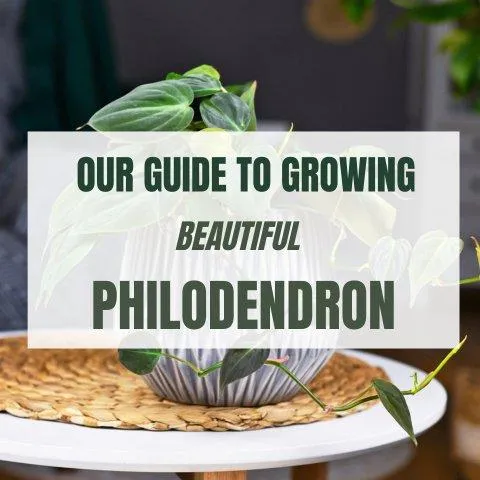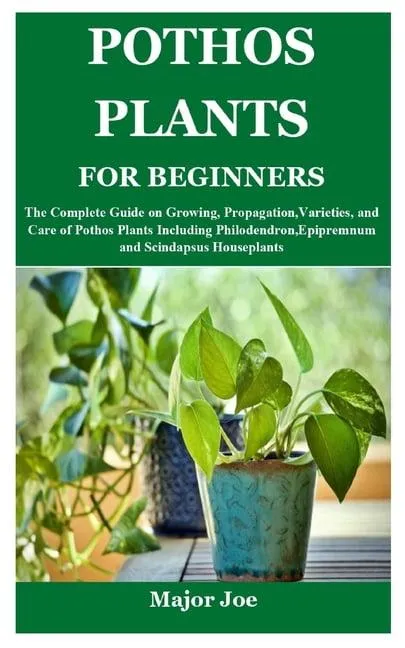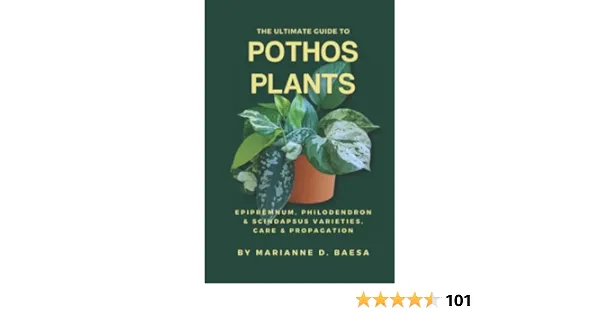An Introduction to Philodendron Plants: A Definitive Guide
Philodendron is a popular genus of flowering plants that includes over 500 different species. As houseplants, philodendrons are very easy to care for and come in a wide variety of leaf shapes and colors. In this article, I will provide a comprehensive overview of philodendrons to help you identify different types and understand their care requirements.
Popular Philodendron Varieties
- Philodendron hederaceum (Heartleaf Philodendron): This is one of the most common philodendron varieties. As the name suggests, its leaves are heart-shaped with distinctive veins. It grows well in low to medium light conditions.
- Philodendron micans (Velvet-Leaf Philodendron): Known for its small green leaves with a soft velvet texture. It thrives in medium to bright indirect light.
- Philodendron selloum (Split-Leaf Philodendron): Easily identifiable by its deeply lobed, kidney-shaped leaves. It grows quickly and makes an dramatic statement.
- Philodendron bipinnatifidum (Lacy Tree Philodendron): This vining philodendron has delicate, lacy leaves reminiscent of a small tree. Provide it a moss pole for support.
- Philodendron scandens (Prince of Orange Philodendron): Stands out with its bright green leaves splashed with shades of pink, red and orange. A spectacular accent plant.
Those are some of the most popular varieties, but there are many others to explore as well. Philodendrons come in an amazing variety of leaf textures, shapes, sizes and colors.
Care Requirements
Philodendrons are very low maintenance overall. Here are some tips to keep them happy and healthy:
Light:
Philodendrons thrive in medium to bright indirect light. Most varieties will burn or drop leaves if placed in direct sun. East or west-facing windows provide ideal illumination.
Water:
Allow the top inch of soil to dry out between waterings. Water thoroughly when dry and drain excess water. Avoid standing water as roots can rot. Consider watering from the bottom through a saucer if leaves yellow.
Humidity:
While philodendrons adapt well to average home conditions, they appreciate moderate humidity around 50%. Use a pebble tray or humidifier especially in drier climates or heat.
Soil:

A well-draining potting mix specifically for houseplants works best. Replace container soil every 2-3 years as it breaks down. Repot only when roots emerge from drainage holes.
Fertilizer:
Feed monthly in the spring and summer with a dilute water-soluble houseplant fertilizer. omit fertilizer in fall and winter when growth slows.
Common Pests and Problems
With proper care, philodendrons are quite resilient. But they may encounter issues from time to time:
Spider mites:
Recognizeable by tiny red specks and webbing. Isolate and rinse leaves with water. Treat with neem oil or insecticide as needed.
Mealybugs:
Fluffy white masses in leaf joints or soil. Carefully remove with cotton swab dipped in rubbing alcohol. Repeat weekly to control.
Root rot:
Soft, dark roots caused by overwatering. Improve drainage and trim off rotted sections. Allow soil to fully dry before watering again.

Leaf drop:
May result from underwatering, temperature fluctuations or low humidity. Adjust care and new growth should emerge. Minor leaf loss is normal.
From my experience as an avid houseplant collector, philodendrons are very forgiving. With a few basic requirements met, they prosper indoors for years! They also adapt well to different conditions, so don’t be afraid to experiment.
propagation
Perhaps you’ve fallen in love with a philodendron variety and want more plants. Lucky for you, philodendrons are a cinch to propagate! There are a few different ways to multiply your philodendron:
Cuttings:
Take 6-8 inch stem cuttings with a few leaves, remove lower leaves, and place the cut end in water. Roots will form within 4-6 weeks. Then transplant to soil.
Division:
For certain varieties that crowd themselves in their pot, turn the plant out and separate offshoots from the mother plant. Each division with 3-5 leaves can be repotted to make new plants.
Plantlets:
Some kinds like heartleaf philodendrons grow plantlets right on the vine. You can simply remove the plantlet and pot it up when it has a few roots showing.
I’ve had excellent results with all these propagation methods. They’re kind of fun too because you get to experience your philodendron “having babies”! Give it a try – it’s rewarding to grow more from your existing houseplants.
Philodendron Care Questions Answered
Hopefully this article provided a thorough walkthrough of philodendron varieties, care best practices, common issues, and propagation possibilities. But feel free to ask if you have any other questions!
Some other topics homeowners often wonder about include:
– Is it ok to keep a philodendron as a tabletop plant without support? Yes, many varieties stay compact as self-heading plants.

– How do I encourage vining philodendrons to climb? Provide a moss pole, curtain rod, or totem for the vines to attach to. They’ll coil around naturally.
– My leaves are getting brown tips – too much sun? It’s possible, but brown tips can also mean the soil is drying out too much between waterings.
– I overwatered – will my philodendron recover? Chances are good it will bounce back with improved drainage and airflow. They’re fairly tolerant of occasional waterlogging.
Hope this discussion answered all your philodendron questions! Let me know if any other issues come up – I’m always happy help fellow plant parents be successful. Wishing you the best of luck growing these easy-care beauties.
10 Philodendron Varieties and Care Tips
| Variety | Size | Care Tips |
|---|---|---|
| Philodendron hederaceum | Medium-sized plant with heart-shaped leaves | Tolerates lower light. Water when top inch of soil is dry. |
| Philodendron selloum | Large plant with leaves up to 2 feet long | Likes humidity. Water weekly and mist leaves. |
| Philodendron scandens | Long vines can grow over 20 feet | Great for hanging baskets. Water weekly during growing season. |
| Philodendron domesticum | Small plant with narrow, wavy leaves | Tolerates low light. Water when soil is dry 1-2 inches deep. |
| Philodendron cordatum | Medium sized plant with heart shaped leaves | Prefers humidity and bright indirect light. Water weekly. |
FAQ
-
What types of philodendrons are commonly grown as houseplants?
Some of the more popular philodendron varieties for indoor growing include Heartleaf Philodendron, Brazilian Philodendron, Red Emerald Philodendron, Black Cardinal Philodendron, and Pink Princess Philodendron. These types basically adapt well to household conditions.
-
How fast do philodendrons grow?
Philodendron growth rates can vary depending on the variety, but most kinds sort of grow fairly fast for indoor plants. In ideal conditions with fertile soil and bright light, philodendrons may possibly put out a new leaf every 2-3 weeks. At the same time, growth may slow down in the winter when light levels are low.
-
What kind of light do philodendrons need?
While philodendrons can get by in lower light than some other houseplants, they’ll thrive and grow best with bright, indirect sunlight. Morning sun is ideal, but they should be protected from harsh afternoon sun, which might scorch their leaves. Philodendrons do well near east or west facing windows. Does that help answer your question?
-
How often should I water my philodendron?
The frequency of watering philodendrons depends on various factors like the size of the plant and pot, type of soil, and temperature. As a general rule, allow the top inch or two of soil to dry out between waterings. During the summer growing season, you may need to water every 5-7 days. Back off to every 10-14 days in winter when growth is slower. But monitor your plant – if the leaves start to look wilted or floppy, it’s time to water!
-
Can philodendrons climb or trail?
While many philodendron varieties stay rather bushy when grown as houseplants, some do exhibit climbing or trailing habits. For example, the Brazilian or Swiss Cheese Philodendron can produce very long “viney” stems that will grow along the branches of a moss pole or cascade over the edge of a hanging basket. So in summary – some philodendrons will climb, while others remain more compact.
-
Are any types of philodendron toxic to pets?
Unfortunately, yes – several popular philodendron types contain calcium oxalate crystals that can cause mouth irritation and even vomiting or drooling if chewed or eaten by cats and dogs. This includes the Heartleaf, Brazil, and Black Cardinal philodendrons. So it’s best to keep curious pets away from your collection, or use hanging baskets well above their reach. Still, accidents happen – so be extra cautious with toxic plants if small children or animals are around.

Does this help explain some of the basics about growing philodendrons as houseplants? Let me know if you have any other questions! While philodendrons are generally low maintenance, keeping them happy does require some TLC. With the right care, though, they can bring amazing foliage to your indoor space for years.
